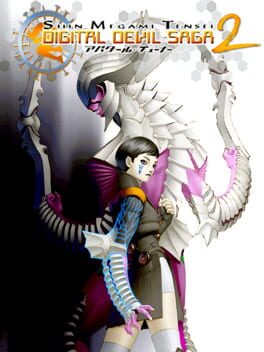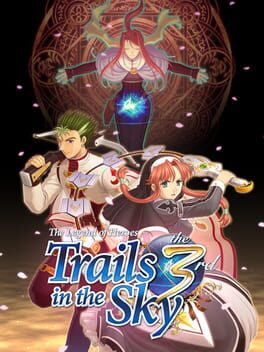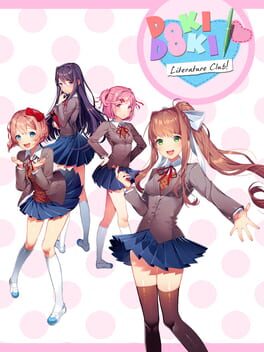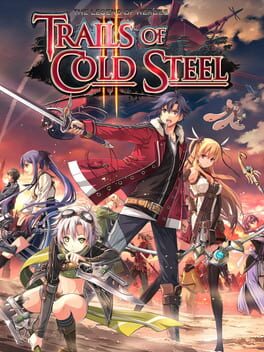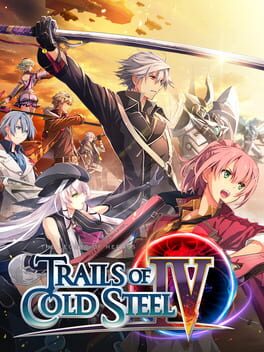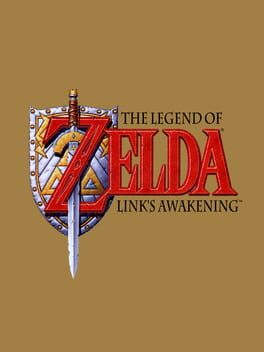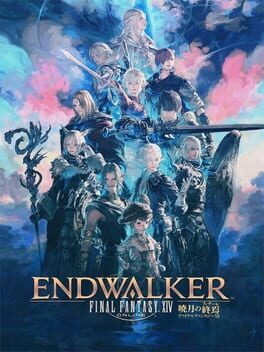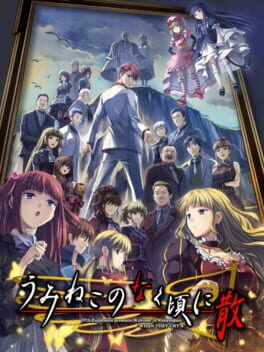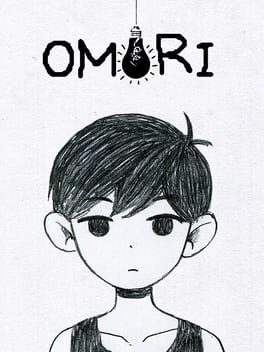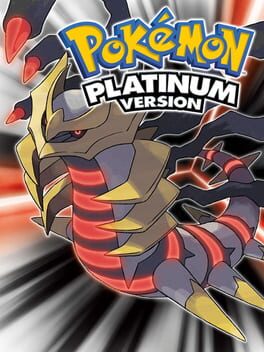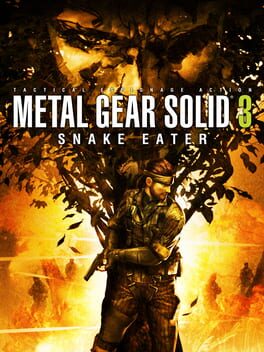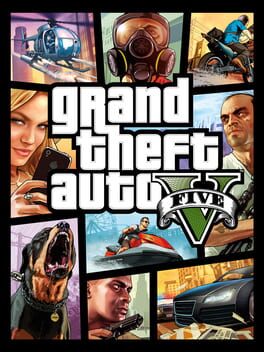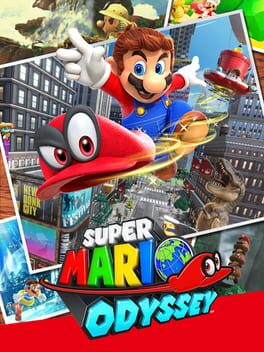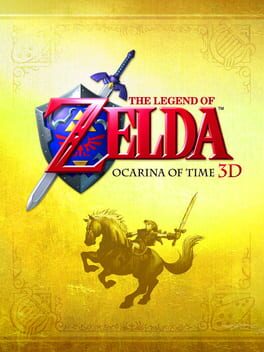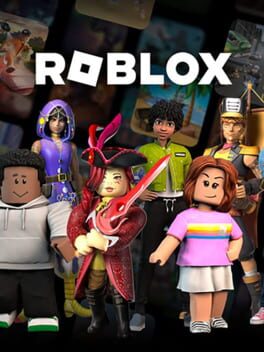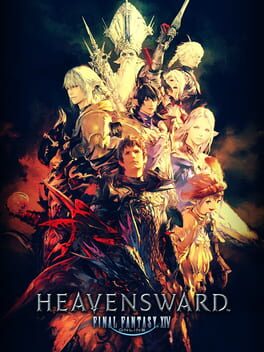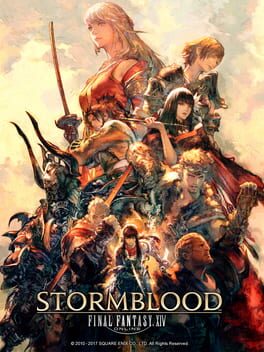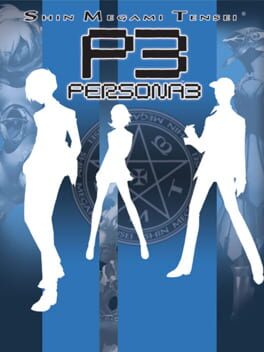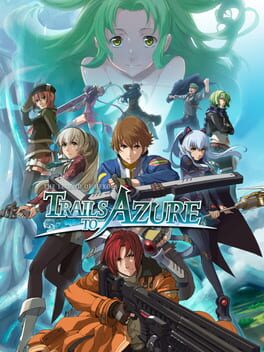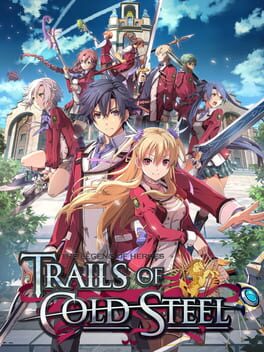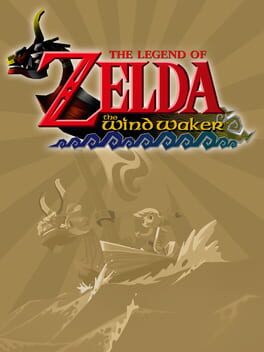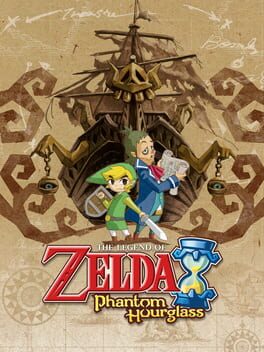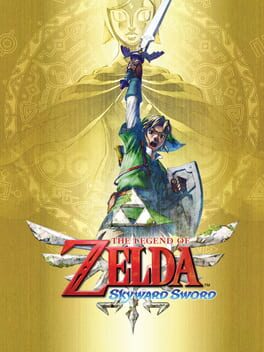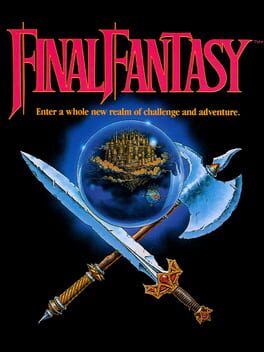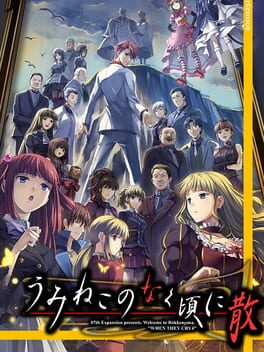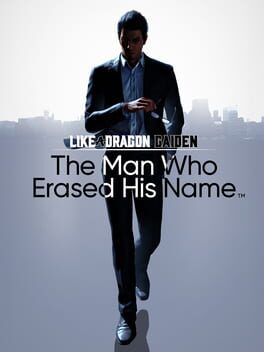Ma23us
253 reviews liked by Ma23us
started off really promising, i like all the changes to the combat, and thought the focus on just the gang hanging out would be fun. but it drags really badly, the mini games and side quests get incredibly tedious, the combat encounters just.. aren't as fun as those in Remake, and just about all of the additions to the plot feel cowardly and disappointing after what Remake set up.
idk this kinda sucked
idk this kinda sucked
This review contains spoilers
This was my most anticipated game this year and I have to say I enjoyed it and found it disappointing. It felt crushed under the wight of its own padding - endless side quests, world traversing, and elongated story sections that should otherwise be urgent in terms of pace and emotional intensity (the Temple of the Ancients is a prime example). I am curious about the multi-verse they've introduced with this series, but dejected at how little they have done with it so far. I waited in anticipation to see how the "unknown story" would change, only for it to be basically the same in the end.
K I finished.
Digital Devil Saga 2 is excellent. After the first game ends with you in a different location and back to square one, you're once again on the run with your old party (and one omission) to try to find your savior and the truth about your existence. The games setting is actually pretty small, being set in one big city that contains what's left of humanity. Pretty much every major character here is fleshed out, and I know it sucks to do the whole 'oh heehee you need to play to find out what I'm REALLY saying' but you kind of do. Just know all the characters are great and all the locations are cool, got it?
And then there's the gameplay, and it's peak...if you pick the exact party the game wants at the beginning, or else you're fucked. Basically, the game lets you customize your party members to an absurd degree, letting every character fill out a cool niche. But the game has all but two party members (Gale and Cielo, use them for the whole game for the love of god) leave for a long while, so if you don't just guess who'll be there for the rest of the game, you'll end up INCREDIBLY underleveled to the point you might as well restart because the game doesn't give backup EXP. It gives backup Mantra for gaining skills, but not EXP.
But aside from that, it's classic press turn gameplay with all it's perks, with some great boss fights that make the most of the mechanics. And it's classic blocky PS2 graphics, helped by Kaneko's amazing PS2 era art and killer cocteau twins inspired(?) soundtrack (seriously, Pitch the Baby sounds perfect for this game)
So it's peak fiction. Loved the ending as a perfect sendoff, so if you're one of those people who request a DDS3...why exactly? Anyway, play this while the roms are out there lmao.
Digital Devil Saga 2 is excellent. After the first game ends with you in a different location and back to square one, you're once again on the run with your old party (and one omission) to try to find your savior and the truth about your existence. The games setting is actually pretty small, being set in one big city that contains what's left of humanity. Pretty much every major character here is fleshed out, and I know it sucks to do the whole 'oh heehee you need to play to find out what I'm REALLY saying' but you kind of do. Just know all the characters are great and all the locations are cool, got it?
And then there's the gameplay, and it's peak...if you pick the exact party the game wants at the beginning, or else you're fucked. Basically, the game lets you customize your party members to an absurd degree, letting every character fill out a cool niche. But the game has all but two party members (Gale and Cielo, use them for the whole game for the love of god) leave for a long while, so if you don't just guess who'll be there for the rest of the game, you'll end up INCREDIBLY underleveled to the point you might as well restart because the game doesn't give backup EXP. It gives backup Mantra for gaining skills, but not EXP.
But aside from that, it's classic press turn gameplay with all it's perks, with some great boss fights that make the most of the mechanics. And it's classic blocky PS2 graphics, helped by Kaneko's amazing PS2 era art and killer cocteau twins inspired(?) soundtrack (seriously, Pitch the Baby sounds perfect for this game)
So it's peak fiction. Loved the ending as a perfect sendoff, so if you're one of those people who request a DDS3...why exactly? Anyway, play this while the roms are out there lmao.
A great epilogue to the liberl arc of trails. When I first started the game I was thinking about how this was one of the mixed games due to its difference in the gameplay loop as there was no exploration which I think was a good choice since it would have been boring to have to explore liberl for a 3rd time. Also the change of protagonists was an unexpected but welcome change due to Estelle having been an already well developed character and 3rd does a good job of having her be part of the story without having to create another character arc for her. Instead of Estelle being the protagonist it expands more of the backstory of Kevin which in SC had a minor role but definitely had a lot of mystery from him which 3rd expands on. The best part and the main part of this game is the memory doors which works as side stories of where the characters are now and for some backstory which gives characters more time to shine. It also shows what they are doing post SC which gives some closure to the liberl arc but also opens up the next arc with expanding the constantly growing world of trails which im excited to continue playing through
A gimmick without much of a plot that has negatively affected the perception of VNs amongst the general audience, with questionable depictions of some serious topics.
It doesn't have some kind of theme or message it wants to convey, or an ambitious central narrative, it's literally all just DDLC patting itself on its own back for "le subversion" or "VNs are... le bad".
To put it in a less reductive way, while it is a fun short little experience in a vacuum (hence why I'm not gonna hop on the hater train and give it 0.5 stars or something, few things are that bad), it makes you wonder who or what this is trying to "subvert". It feels like it "subverts" the stereotype of what a VN (except DDLC, Danganronpa, VA-11 HALL-A and Ace Attorney, of course!) is, rather than what VNs actually are about. It feels like it was basically made to be one of the only popular VNs in the West. It's in its DNA since it kind of feels ashamed of the usual VN tropes.
I know that Dan Salvato has played various visual novels, such as Nasu stuff, Steins;Gate, Umineko, 999, Clannad and G-Senjou no Maou (example source 1, example source 2), but does DDLC resemble any of these? Where in Tsukihime or Umineko does the protagonist literally just go to school and have romantic tension with girls and then nothing happens? Say what you want about Umineko, Tsukihime, or whichever highly rated VNs, but they generally are so focused on themes and characterisation to the point of repeating the same stuff ad nauseum sometimes. And then we look at DDLC it is literally just the trope until more than halfway, and after that point it doesn't suddenly become character focused, it becomes focused on the gimmick that everyone who's played it knows. All of the ones Salvato has been confirmed to actually have read don't resemble the idea of a simple romcom/romdrama "dating sim" that is what people think VNs generally are. It feels like it's "subverting" the stereotype of VNs being "dating sims" (which are kind of different from even romance VNs but whatever). All of these popular acclaimed VNs have complex, usually ambitious plots that try to experiment with the VN medium and aren't just subversion for subversion's sake. I don't really see much depth to DDLC aside from the alleged commentary on the medium and highly questionable depictions of mental health issues.
I don't doubt that Salvato has a passion for VNs. I just wish he attempted to write one that is more plot-centric, to use the lessons he learned from the VNs he's read. Something like Katawa Shoujo. But instead of getting more Katawa Shoujos, Western VNs nowadays have a lot of attempts at trying to capture the same kind of success of "not being like other VNs" (which they haven't read probably, but that's just the cynic in me talking) and having extreme humor or fourth wall breaks or something. As a result, with it already being hard enough to find people who read anything except Nasu, Ryukishi and maybe a one-off like a SCA-DI work or a NITROPLUS or something, or SciAdv stuff, as a regular VN reader, you will now have to have the exact same conversation with the exact same kinds of people who say every VN except DDLC and maybe Danganronpa is garbage. Wonderful.
Is there any other medium that has this many creators trying to separate themselves from it and act like their product is the only unique one? Sure, there's a few that Western-original VNs that don't do this, like Our Life or the Sekimeiya, and the aforementioned Katawa Shoujo, but for every Sekimeiya there are dozens of VNs that take pride in being superior to whatever the perception of VNs is for people who don't read them. Instead of doing this, people could be spreading their love for VNs, like Fate (when they're not busy feeling superior to people who just like the Fate anime just because they read their first VN) and Umineko (when they're not busy feeling superior to other VNs' fanbases for whatever reason. Not that there are any good VN fanbases) fans do.
I won't name anything to not spoil anyone, but the subversion of visual novels as a medium and their tropes, as well as "visual novels are unhealthy, actually" has been done many times in the medium without making vague mockery of the medium without truly understanding it.
I don't really know where I'm going with this anymore. I suppose I'm disappointed that a medium with so many good stories, a medium that experiments and takes risks much more often than the overwhelming majority of videogames, and especially the overwhelming majority of anime, that already had to fight an uphill battle against the stereotypes and stigma, now gets more added to the fire. I suppose I will need to accept that it will be niche outside of some circles in Japan forever. Maybe this was where I wanted to put it into words.
It doesn't have some kind of theme or message it wants to convey, or an ambitious central narrative, it's literally all just DDLC patting itself on its own back for "le subversion" or "VNs are... le bad".
To put it in a less reductive way, while it is a fun short little experience in a vacuum (hence why I'm not gonna hop on the hater train and give it 0.5 stars or something, few things are that bad), it makes you wonder who or what this is trying to "subvert". It feels like it "subverts" the stereotype of what a VN (except DDLC, Danganronpa, VA-11 HALL-A and Ace Attorney, of course!) is, rather than what VNs actually are about. It feels like it was basically made to be one of the only popular VNs in the West. It's in its DNA since it kind of feels ashamed of the usual VN tropes.
I know that Dan Salvato has played various visual novels, such as Nasu stuff, Steins;Gate, Umineko, 999, Clannad and G-Senjou no Maou (example source 1, example source 2), but does DDLC resemble any of these? Where in Tsukihime or Umineko does the protagonist literally just go to school and have romantic tension with girls and then nothing happens? Say what you want about Umineko, Tsukihime, or whichever highly rated VNs, but they generally are so focused on themes and characterisation to the point of repeating the same stuff ad nauseum sometimes. And then we look at DDLC it is literally just the trope until more than halfway, and after that point it doesn't suddenly become character focused, it becomes focused on the gimmick that everyone who's played it knows. All of the ones Salvato has been confirmed to actually have read don't resemble the idea of a simple romcom/romdrama "dating sim" that is what people think VNs generally are. It feels like it's "subverting" the stereotype of VNs being "dating sims" (which are kind of different from even romance VNs but whatever). All of these popular acclaimed VNs have complex, usually ambitious plots that try to experiment with the VN medium and aren't just subversion for subversion's sake. I don't really see much depth to DDLC aside from the alleged commentary on the medium and highly questionable depictions of mental health issues.
I don't doubt that Salvato has a passion for VNs. I just wish he attempted to write one that is more plot-centric, to use the lessons he learned from the VNs he's read. Something like Katawa Shoujo. But instead of getting more Katawa Shoujos, Western VNs nowadays have a lot of attempts at trying to capture the same kind of success of "not being like other VNs" (which they haven't read probably, but that's just the cynic in me talking) and having extreme humor or fourth wall breaks or something. As a result, with it already being hard enough to find people who read anything except Nasu, Ryukishi and maybe a one-off like a SCA-DI work or a NITROPLUS or something, or SciAdv stuff, as a regular VN reader, you will now have to have the exact same conversation with the exact same kinds of people who say every VN except DDLC and maybe Danganronpa is garbage. Wonderful.
Is there any other medium that has this many creators trying to separate themselves from it and act like their product is the only unique one? Sure, there's a few that Western-original VNs that don't do this, like Our Life or the Sekimeiya, and the aforementioned Katawa Shoujo, but for every Sekimeiya there are dozens of VNs that take pride in being superior to whatever the perception of VNs is for people who don't read them. Instead of doing this, people could be spreading their love for VNs, like Fate (when they're not busy feeling superior to people who just like the Fate anime just because they read their first VN) and Umineko (when they're not busy feeling superior to other VNs' fanbases for whatever reason. Not that there are any good VN fanbases) fans do.
I won't name anything to not spoil anyone, but the subversion of visual novels as a medium and their tropes, as well as "visual novels are unhealthy, actually" has been done many times in the medium without making vague mockery of the medium without truly understanding it.
I don't really know where I'm going with this anymore. I suppose I'm disappointed that a medium with so many good stories, a medium that experiments and takes risks much more often than the overwhelming majority of videogames, and especially the overwhelming majority of anime, that already had to fight an uphill battle against the stereotypes and stigma, now gets more added to the fire. I suppose I will need to accept that it will be niche outside of some circles in Japan forever. Maybe this was where I wanted to put it into words.
The Legend of Zelda
1986
This is the start of a series of reviews that I’ve titled “The Great Zelda Binge”, where I’ll be reviewing all of the single player mainline entries in The Legend of Zelda series, as well as their various ports. The Legend of Zelda is my favorite video game franchise. It’s that childhood game series that remains near and dear to my heart to this day, and is immensely responsible for my love of the medium in general. Writing in-depth reviews on each mainline entry in the series is my way of paying tribute to it, as well as finally forcing myself to catch up on a couple of stray titles in the series that I just haven’t gotten to yet. Some friends of mine, Reyn, Quent, Steinco, and PT are also doing similar Zelda marathons, and I highly recommend giving their reviews a look as well.
All that being said, despite my proclaimed love for the franchise, I will admit: coming to appreciate its very first game is rather difficult. The original Legend of Zelda lays down an enormous amount of groundwork for the series. It is more or less the template that the vast majority of games in the series would follow going forward. Despite being a strong foundation to build upon, ultimately, that’s all the first Zelda is: a foundation. It’s a primitive game that understandably has numerous issues that end up being addressed in future entries of the series.
Ages ago, the kingdom of Hyrule was in possession of the “Triforces”, which were golden triangle-shaped objects imbued with mystic power. The Prince of Darkness, Ganon, led an army of monsters to attack Hyrule in order to seize the Triforces and wield their awesome abilities for himself, so he could plunge the world into darkness and rule over it all. After he acquired the Triforce of Power, the princess of Hyrule, Zelda, split the Triforce of Wisdom into eight separate pieces and hid them throughout the kingdom in order to keep Ganon from obtaining it, while sending her attendant, Impa, to seek out someone with the courage to defeat Ganon. After learning about what the princess had done, Ganon imprisoned Zelda and sent his monsters to track down Impa, who at the last minute, was saved by a young man named Link. After Impa tells Link about everything that’s happened, Link’s sense of justice causes him to resolve to find the eight pieces of the Triforce of Wisdom, rescue Zelda, and stop Ganon’s plans to take over the world.
The Legend of Zelda is a game that’s meant to recreate a traditional fantasy adventure. It’s a top-down, action-adventure game rooted in the concept of exploration, of going out into the world and uncovering all sorts of secrets and battling evil monsters during your quest to rescue the princess. The game starts Link off in the Overworld, which is where you’ll spend a majority of your time traversing. After obtaining the wooden sword from the cave on the starting screen, you set out into the world. There’s a lot you will find throughout the land of Hyrule. You can discover special items that Link can use either in combat or while exploring, such as the boomerang, which can stun enemies, or the bombs, whose explosions can damage enemies and reveal hidden caves and pathways. There are hordes of monsters that you encounter, as well as various caves with merchants you can purchase items from, and even secret individuals who will grant you a reward for finding them. Despite the game’s ethos being rooted in exploration and discovery, its biggest problem is that it’s designed in a way that doesn’t make exploration enjoyable at all. In fact, blindly exploring in this game is downright painful. The Overworld in particular is absolutely miserable to traverse if you don’t know where to go or what to do.
Almost every screen in the Overworld is overrun by all sorts of different monsters, and I do mean overrun. You can’t go a single screen in any direction without a mob of enemies immediately spawning in and hurling projectiles at you. At the start of the game, Link is particularly fragile, it doesn’t take more than a couple of hits for him to go down. Dying causes Link to respawn with only three hearts at the starting screen with the cave where you find the sword, and while you can obtain items and upgrades that will make Link live longer, I can’t imagine most people figuring out how to find them on their own.
I will be completely up front: I used a guide for the Overworld sections of the game, and if you plan on trying this out for yourself, I highly recommend you do the same. The particular guide I used, which was found on zeldadungeon.net, specifically has you go out and obtain a number of items and upgrades as the very first thing you do in the game. It’s very understandable why the guide has you get them. A couple of these items, specifically the Heart Containers and the Blue Ring, are particularly important to get as early as possible if you want to keep yourself from dying to a single touch, as they give Link additional health and lessen the amount of damage he takes from enemies respectively.
This ties into what I believe to be the biggest issue of the game. A number of these special items and upgrades are located or tied to secrets you can find throughout the Overworld. These secrets include hidden merchants who you can buy items from, old men who will give you additional Heart Containers, and the occasional friendly monster who will pay you an amount of rupees (the currency of The Legend of Zelda series) for discovering them, which you would otherwise have to collect by grinding enemies. While you could consider the game’s secrets to be optional, as it is possible to beat the game without them, choosing not to seek them out will make things much harder for you. The problem is that the game’s secrets are hidden in an extremely poor fashion. They will usually be hidden in caves that you have to discover by bombing specific walls, or underneath bushes that you have to burn using the Candle item. However, you have absolutely no way of telling what wall can be bombed or what bush can be burned. When it comes to bombs, you can only carry a limited supply, and the Candle can only be used once per screen. Unless you want to go through the utterly insane process of bombing every single wall you see, or burning a single bush, leaving the current screen and then returning to burn another one, then you will not find these (in my opinion) highly necessary upgrades.
The pieces of the Triforce are all located in places known as labyrinths, which are underground maze-like locations filled with traps and enemies. Labyrinths are where you’ll find a majority of special items in the game, as each labyrinth has at least one item for you to find. The end of each labyrinth features a showdown with a boss guarding a piece of the Triforce. Upon defeating it, Link will earn a Heart Container and he’ll also be able to collect the Triforce piece the boss is guarding. After completing all eight labyrinths and gathering all eight Triforce pieces, Link can then set out in search of the final labyrinth in Death Mountain, where Ganon and the Princess reside.
The labyrinths are relatively simple to explore compared to the Overworld. They typically consist of various rooms where you just fight enemies on your way to find the dungeon's key item and then the boss. You’ll occasionally need to push a random block in a room in order to unlock a stairway to a hidden passage as well. About halfway through the game, however, labyrinths do require you to bomb specific walls in order to progress, and you run into the same issue that you have with the Overworld: you have no way of knowing what walls to bomb, which can cause you to waste them. If you’re not using a guide during the labyrinths and you’re playing the game either via an emulator or on Nintendo Switch Online, you’re going to want to use the rewind feature very often just to make sure that you don’t waste bombs trying to figure out where to go.
Labyrinths are also where you’ll be doing the most combat as well. Combat in this game, despite being simple at heart, does get more complex than you’d expect. You can only thrust your sword in the direction that Link is currently facing, meaning you have to frequently move and position yourself according to the enemy’s moving patterns so that you can hit them without getting hit yourself. Certain enemies can only be attacked at certain angles, though as you progress through the game and get more upgrades, you can just start to tank hits from weaker enemies and mash your sword, which is admittedly rather lazy and does make the combat less engaging than it would otherwise be.
Its presentation is about what you’d expect for the NES. Its visual style is simple, yet iconic all the same. It makes great use of the NES’ color palette to simulate various climates that you explore, such as green forest areas, brown mountain areas and deserts, and blue lakes and rivers. It’s only got about five music tracks, but again, it's some of the most iconic music in all of video games. The main theme in particular is up there with Super Mario Bros’ overworld theme as one of the most well known video game songs of all time. Koji Kondo made do with what he had to work with, and he did a damn good job, he truly understood the assignment.
The Legend of Zelda, despite not quite earning my enjoyment, still earns my respect at the bare minimum. Technically, almost everything that I would come to love about the series is here, but what’s here is rather unrefined. It’s a game that I’m happy to have completed for the sole purpose of being able to say “I beat Zelda 1”, but otherwise, it’s not really a game I can recommend to people nowadays unless you are adamant about experiencing Zelda’s roots. It doesn’t accomplish its goal of providing an enjoyable exploration-based experience primarily because of the way its upgrades and certain items are distributed and hidden, but the building blocks for future Zelda titles are there. The series wouldn’t be around without it, and plenty of other games wouldn’t be around without it either. It’s a necessary first step on the path to something far greater.
All that being said, despite my proclaimed love for the franchise, I will admit: coming to appreciate its very first game is rather difficult. The original Legend of Zelda lays down an enormous amount of groundwork for the series. It is more or less the template that the vast majority of games in the series would follow going forward. Despite being a strong foundation to build upon, ultimately, that’s all the first Zelda is: a foundation. It’s a primitive game that understandably has numerous issues that end up being addressed in future entries of the series.
Ages ago, the kingdom of Hyrule was in possession of the “Triforces”, which were golden triangle-shaped objects imbued with mystic power. The Prince of Darkness, Ganon, led an army of monsters to attack Hyrule in order to seize the Triforces and wield their awesome abilities for himself, so he could plunge the world into darkness and rule over it all. After he acquired the Triforce of Power, the princess of Hyrule, Zelda, split the Triforce of Wisdom into eight separate pieces and hid them throughout the kingdom in order to keep Ganon from obtaining it, while sending her attendant, Impa, to seek out someone with the courage to defeat Ganon. After learning about what the princess had done, Ganon imprisoned Zelda and sent his monsters to track down Impa, who at the last minute, was saved by a young man named Link. After Impa tells Link about everything that’s happened, Link’s sense of justice causes him to resolve to find the eight pieces of the Triforce of Wisdom, rescue Zelda, and stop Ganon’s plans to take over the world.
The Legend of Zelda is a game that’s meant to recreate a traditional fantasy adventure. It’s a top-down, action-adventure game rooted in the concept of exploration, of going out into the world and uncovering all sorts of secrets and battling evil monsters during your quest to rescue the princess. The game starts Link off in the Overworld, which is where you’ll spend a majority of your time traversing. After obtaining the wooden sword from the cave on the starting screen, you set out into the world. There’s a lot you will find throughout the land of Hyrule. You can discover special items that Link can use either in combat or while exploring, such as the boomerang, which can stun enemies, or the bombs, whose explosions can damage enemies and reveal hidden caves and pathways. There are hordes of monsters that you encounter, as well as various caves with merchants you can purchase items from, and even secret individuals who will grant you a reward for finding them. Despite the game’s ethos being rooted in exploration and discovery, its biggest problem is that it’s designed in a way that doesn’t make exploration enjoyable at all. In fact, blindly exploring in this game is downright painful. The Overworld in particular is absolutely miserable to traverse if you don’t know where to go or what to do.
Almost every screen in the Overworld is overrun by all sorts of different monsters, and I do mean overrun. You can’t go a single screen in any direction without a mob of enemies immediately spawning in and hurling projectiles at you. At the start of the game, Link is particularly fragile, it doesn’t take more than a couple of hits for him to go down. Dying causes Link to respawn with only three hearts at the starting screen with the cave where you find the sword, and while you can obtain items and upgrades that will make Link live longer, I can’t imagine most people figuring out how to find them on their own.
I will be completely up front: I used a guide for the Overworld sections of the game, and if you plan on trying this out for yourself, I highly recommend you do the same. The particular guide I used, which was found on zeldadungeon.net, specifically has you go out and obtain a number of items and upgrades as the very first thing you do in the game. It’s very understandable why the guide has you get them. A couple of these items, specifically the Heart Containers and the Blue Ring, are particularly important to get as early as possible if you want to keep yourself from dying to a single touch, as they give Link additional health and lessen the amount of damage he takes from enemies respectively.
This ties into what I believe to be the biggest issue of the game. A number of these special items and upgrades are located or tied to secrets you can find throughout the Overworld. These secrets include hidden merchants who you can buy items from, old men who will give you additional Heart Containers, and the occasional friendly monster who will pay you an amount of rupees (the currency of The Legend of Zelda series) for discovering them, which you would otherwise have to collect by grinding enemies. While you could consider the game’s secrets to be optional, as it is possible to beat the game without them, choosing not to seek them out will make things much harder for you. The problem is that the game’s secrets are hidden in an extremely poor fashion. They will usually be hidden in caves that you have to discover by bombing specific walls, or underneath bushes that you have to burn using the Candle item. However, you have absolutely no way of telling what wall can be bombed or what bush can be burned. When it comes to bombs, you can only carry a limited supply, and the Candle can only be used once per screen. Unless you want to go through the utterly insane process of bombing every single wall you see, or burning a single bush, leaving the current screen and then returning to burn another one, then you will not find these (in my opinion) highly necessary upgrades.
The pieces of the Triforce are all located in places known as labyrinths, which are underground maze-like locations filled with traps and enemies. Labyrinths are where you’ll find a majority of special items in the game, as each labyrinth has at least one item for you to find. The end of each labyrinth features a showdown with a boss guarding a piece of the Triforce. Upon defeating it, Link will earn a Heart Container and he’ll also be able to collect the Triforce piece the boss is guarding. After completing all eight labyrinths and gathering all eight Triforce pieces, Link can then set out in search of the final labyrinth in Death Mountain, where Ganon and the Princess reside.
The labyrinths are relatively simple to explore compared to the Overworld. They typically consist of various rooms where you just fight enemies on your way to find the dungeon's key item and then the boss. You’ll occasionally need to push a random block in a room in order to unlock a stairway to a hidden passage as well. About halfway through the game, however, labyrinths do require you to bomb specific walls in order to progress, and you run into the same issue that you have with the Overworld: you have no way of knowing what walls to bomb, which can cause you to waste them. If you’re not using a guide during the labyrinths and you’re playing the game either via an emulator or on Nintendo Switch Online, you’re going to want to use the rewind feature very often just to make sure that you don’t waste bombs trying to figure out where to go.
Labyrinths are also where you’ll be doing the most combat as well. Combat in this game, despite being simple at heart, does get more complex than you’d expect. You can only thrust your sword in the direction that Link is currently facing, meaning you have to frequently move and position yourself according to the enemy’s moving patterns so that you can hit them without getting hit yourself. Certain enemies can only be attacked at certain angles, though as you progress through the game and get more upgrades, you can just start to tank hits from weaker enemies and mash your sword, which is admittedly rather lazy and does make the combat less engaging than it would otherwise be.
Its presentation is about what you’d expect for the NES. Its visual style is simple, yet iconic all the same. It makes great use of the NES’ color palette to simulate various climates that you explore, such as green forest areas, brown mountain areas and deserts, and blue lakes and rivers. It’s only got about five music tracks, but again, it's some of the most iconic music in all of video games. The main theme in particular is up there with Super Mario Bros’ overworld theme as one of the most well known video game songs of all time. Koji Kondo made do with what he had to work with, and he did a damn good job, he truly understood the assignment.
The Legend of Zelda, despite not quite earning my enjoyment, still earns my respect at the bare minimum. Technically, almost everything that I would come to love about the series is here, but what’s here is rather unrefined. It’s a game that I’m happy to have completed for the sole purpose of being able to say “I beat Zelda 1”, but otherwise, it’s not really a game I can recommend to people nowadays unless you are adamant about experiencing Zelda’s roots. It doesn’t accomplish its goal of providing an enjoyable exploration-based experience primarily because of the way its upgrades and certain items are distributed and hidden, but the building blocks for future Zelda titles are there. The series wouldn’t be around without it, and plenty of other games wouldn’t be around without it either. It’s a necessary first step on the path to something far greater.
This was definitely a worthwhile payoff for the first game. It for sure has tremendous issues from the pacing of act 2, and some of the characters not doing much in the game, but the thematic highs and overall fun I had with it more than make up for it.
Honestly the highs are so high that it's probably my second favorite in the series so far. The themes it covers regarding moving forward towards one's path in life really resonated with me extremely, and certain twists towards the end hammered it home even harder. This was surprisingly one of the most emotional games in the series for me as a result of this.
Rean embodies this theme entirely which made me especially connect with him a lot. He has tremendous potential for the series moving forward especially with all the developments at the end of the game. His dynamic with Crow was also a highlight of the game.
While class 7 was uneven in how much focus each member got, I still connected with them and the members that are good are really good such as Fie and Jusis. Fie in particular is already one of my favorite party members in the series.
The gameplay is for sure the best in the series so far with plenty of additions to it mechanically which kept me entertained even when the story was spinning its wheels. My only critique with it was that it gets really easy towards the end of the game. I literally killed the final boss in just 3 s crafts even while playing on hard difficulty. It's such an easy game to break.
All in all, this game impressed me. While I can understand why people often put this game low or the very bottom in their rankings for the series, for me personally, it worked and I'll be moving forward to the second half of Cold Steel with very high expectations.
Honestly the highs are so high that it's probably my second favorite in the series so far. The themes it covers regarding moving forward towards one's path in life really resonated with me extremely, and certain twists towards the end hammered it home even harder. This was surprisingly one of the most emotional games in the series for me as a result of this.
Rean embodies this theme entirely which made me especially connect with him a lot. He has tremendous potential for the series moving forward especially with all the developments at the end of the game. His dynamic with Crow was also a highlight of the game.
While class 7 was uneven in how much focus each member got, I still connected with them and the members that are good are really good such as Fie and Jusis. Fie in particular is already one of my favorite party members in the series.
The gameplay is for sure the best in the series so far with plenty of additions to it mechanically which kept me entertained even when the story was spinning its wheels. My only critique with it was that it gets really easy towards the end of the game. I literally killed the final boss in just 3 s crafts even while playing on hard difficulty. It's such an easy game to break.
All in all, this game impressed me. While I can understand why people often put this game low or the very bottom in their rankings for the series, for me personally, it worked and I'll be moving forward to the second half of Cold Steel with very high expectations.
After letting things settle a bit I think I’m ready to talk about it. Honestly I think cold steel 4 is an impressive achievement in and of itself. How it was able to to showcase the amalgamation and build up of the entire series and showcase its interconnected nature yet again was so exciting as a fan to see. So much thought and care was taken into this series and ultimately opening other doors into what future instalments will yield is one of my favourite aspects about trails. It’s a never ending story that keeps on evolving.
I kinda view CS4 as like a benchmark as to where the series has gone after all this time and quite frankly it’s crazy. Like u have some of the series highest peaks to boot. The game isn’t “flawless” by any means with some pacing issues here and there but tbh they are pretty negligible in the grand scheme of things. You are getting some of the craziest moments in the series in this game right here.
As a guy who has been playing games all their life, I really think that we aren’t going to get another experience or universe like trails ever again. This is a once in a lifetime kinda franchise and to think a game could tackle that grandiose nature of having all these worlds, characters, lore converge onto one stage and it being done gracefully is just incredible man. All the callbacks and all the referencing being brought forth kind of makes the experience sweeter after playing everything and witnessing this journey.
I gotta talk about Rean cause man, I think he’s my favourite Trails Protag as of right now. His journey of self discovery was really great to see, him battling his self deprecating nature of his perception of self and breaking down those barriers was nice to see. A lot of the time he values what everyone else brings into his life but pictures it that he has nothing to return to others and doesn’t deserve their kindness. But over time he understands that bonds and relationships with people are two way, you’re always going to provide something special to the other person in some shape of form. I think his journey through his struggles is very organic and well done. I cannot fathom the slander Rean receives in any capacity.
I think giving it some time off after finishing it has been the best for me so that I could figure how I feel about it in the grand scheme of things. Albeit not necessarily my favourite entry in the series but as a climax game I think it’s like close to the best (Behind Azure for me personally). It’s an incredible experience worth all the hundreds of hours I’ve put into this series up until this point.
I already claimed that after azure I was gonna be a fan of this series forever but CS4 has strengthened my stance on it. My love for interconnected series is only growing by the day and Trails is no exception. The more I think about it I’m happy with this rating but over time it might change depending on how reverie paints it but I’m happy with this.
I kinda view CS4 as like a benchmark as to where the series has gone after all this time and quite frankly it’s crazy. Like u have some of the series highest peaks to boot. The game isn’t “flawless” by any means with some pacing issues here and there but tbh they are pretty negligible in the grand scheme of things. You are getting some of the craziest moments in the series in this game right here.
As a guy who has been playing games all their life, I really think that we aren’t going to get another experience or universe like trails ever again. This is a once in a lifetime kinda franchise and to think a game could tackle that grandiose nature of having all these worlds, characters, lore converge onto one stage and it being done gracefully is just incredible man. All the callbacks and all the referencing being brought forth kind of makes the experience sweeter after playing everything and witnessing this journey.
I gotta talk about Rean cause man, I think he’s my favourite Trails Protag as of right now. His journey of self discovery was really great to see, him battling his self deprecating nature of his perception of self and breaking down those barriers was nice to see. A lot of the time he values what everyone else brings into his life but pictures it that he has nothing to return to others and doesn’t deserve their kindness. But over time he understands that bonds and relationships with people are two way, you’re always going to provide something special to the other person in some shape of form. I think his journey through his struggles is very organic and well done. I cannot fathom the slander Rean receives in any capacity.
I think giving it some time off after finishing it has been the best for me so that I could figure how I feel about it in the grand scheme of things. Albeit not necessarily my favourite entry in the series but as a climax game I think it’s like close to the best (Behind Azure for me personally). It’s an incredible experience worth all the hundreds of hours I’ve put into this series up until this point.
I already claimed that after azure I was gonna be a fan of this series forever but CS4 has strengthened my stance on it. My love for interconnected series is only growing by the day and Trails is no exception. The more I think about it I’m happy with this rating but over time it might change depending on how reverie paints it but I’m happy with this.
18 lists liked by Ma23us
by Nancyfly |
0 Games
by Phantasm |
27 Games
by ethereals |
8 Games
by TheRevacholian |
11 Games
by ethereals |
6 Games
by Meiya |
15 Games
by Poefred |
22 Games
by Armakeen |
14 Games
by CorpsSansOrganes |
9 Games

